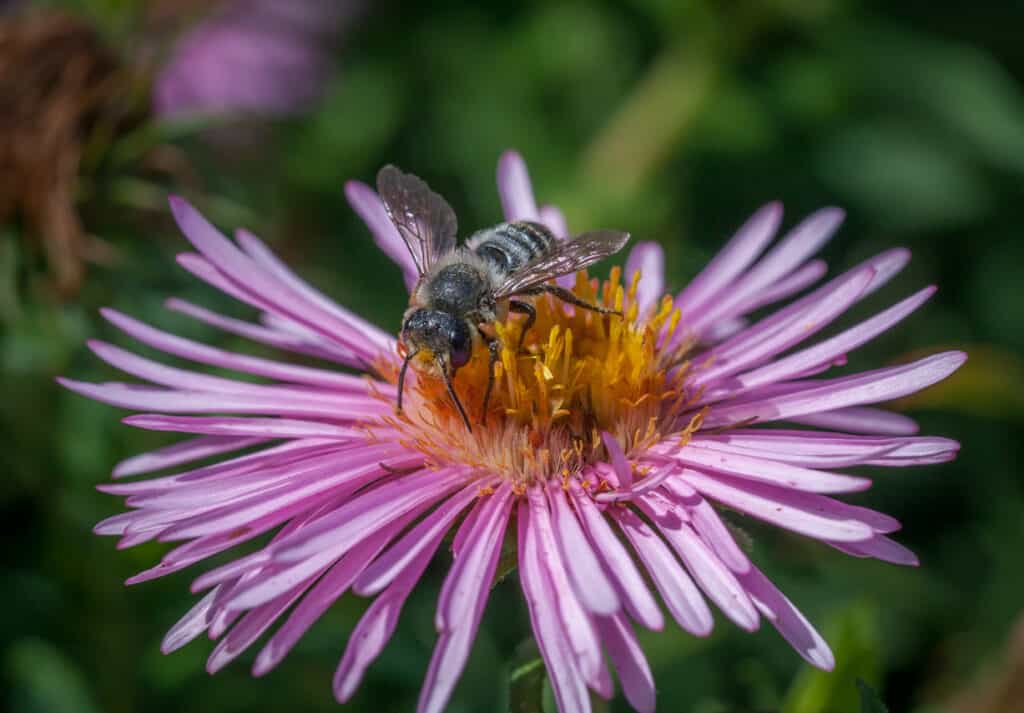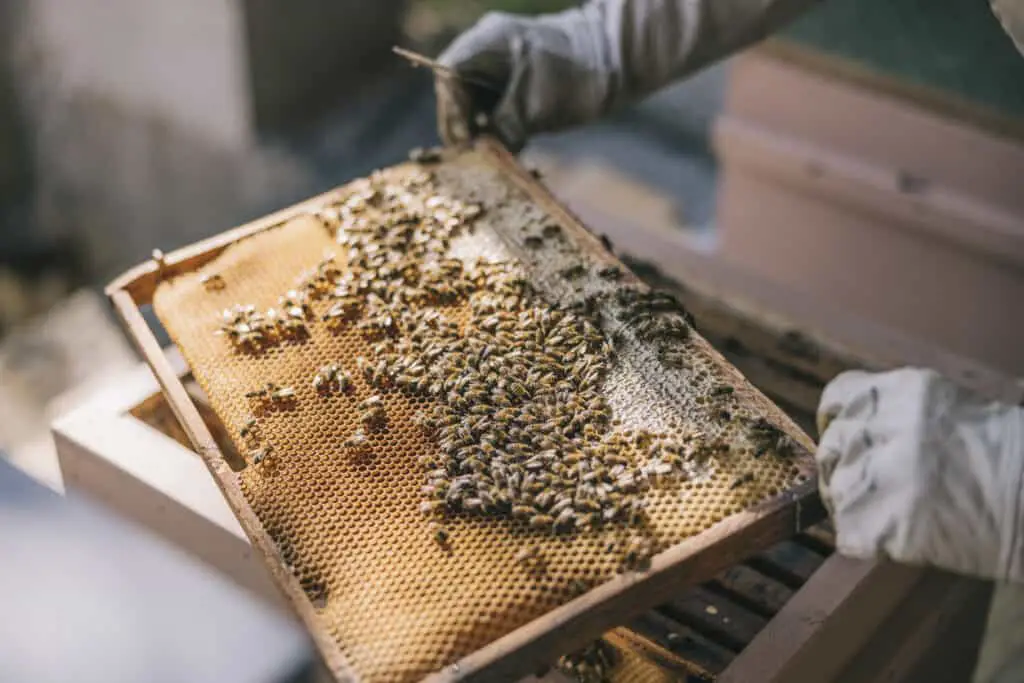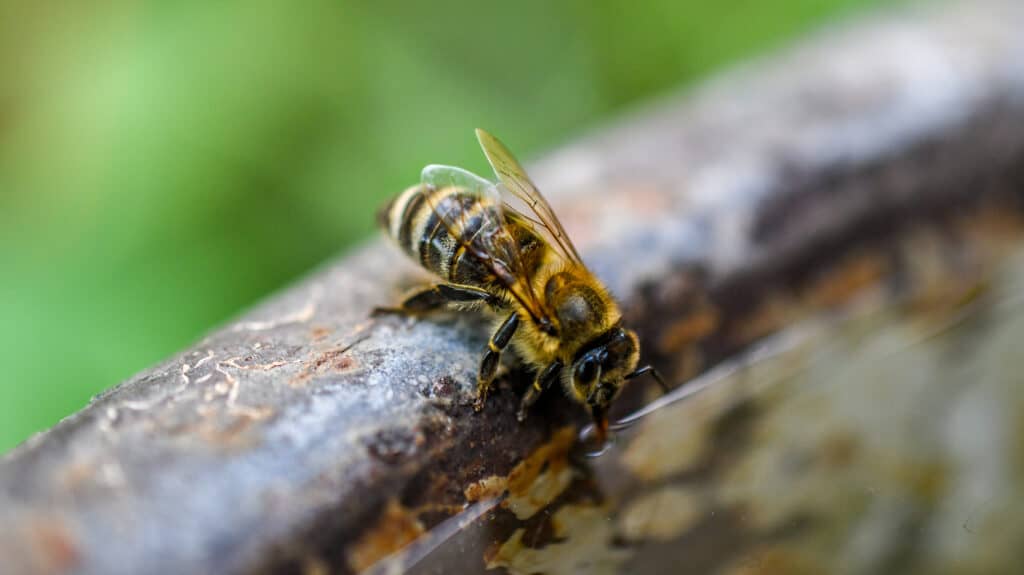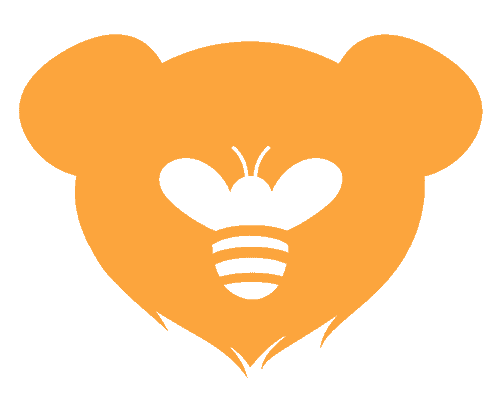The maintenance of bee colonies, more commonly in manufactured hives, has become a popular hobby or business. These beehives require much upkeep and maintenance by bee owners to ensure that it achieves the desired results. As a beekeeper, you would expect the bees to contribute by working towards the manufacture of the honey. Contribution is not always the case, especially for the Robber Bees.
As the name suggests, Robber Bees are bees that will invade another beehive and steal the honey. They will fly to the hive, steal the honey, and fly back to their hive. Their level of intelligence never ceases to amaze. When you realize you have been robbed, it might be too late.
Curious to know more about these intelligent insects? If you are wondering how to prevent them from robbing you, you might want to understand how to identify them and the reasons behind their actions. Join me to gain a deeper insight into the world of Robber Bees.
How To Identify A Robber Bee?

It is often difficult to identify a Robber Bee as they appear to look like any general bee. There are, however, some noticeable behavioral patterns. If you notice a bee swaying side to side before approaching the hive, the chances are it is a robber bee. Any other bee would typically fly straight through the entrance.
You may also notice the appearance of wasps that tag along with the robber bees. Since robber bees do not go straight through the entrance, you might notice them around the cracks and seams of the hive in a desperate attempt to get in. The robber bees also do not carry any pollen on their legs.
You might notice a swarm of bees fighting around the hive if you look carefully. The fighting indicates that there is some foraging and defending in progress. The battle often results in casualties, sometimes to the extent of some dead bees lying around the hive. The repercussion of this fight might include some loss of hair, leading to shiny, black bodies.
If you don’t see the physical appearance of the robber bee, you will hear it. These bees are generally louder than other bees. Broken pieces of wax outside the hive indicate that these robber bees have ripped the honeycomb open to escape with whatever honey they could.
Why Do Robber Bees Invade Other Hives?

There is always a reason for an action, and so too in the case of robber bees. Robber Bees give a new meaning to the word “hoarders.” They will go from hive to hive in search of honey. Often the amount of honey they collect is limitless.
Their tactic for victory is to pry on weaker colonies to strip them of all their honey. As soon as the robber bees get a scent of the honey, they send out some scouts to eye out the perimeters. These scouts will come back with the news, and if the bees look lethargic, the robber bees will invade, knowing that they stand a better chance at victory.
A Robber Bee will invade a hive in the hope of securing an abundance of honey to avoid working twice as hard in inclement weather when pollen and nectar are scarce. A hive invasion will see the robber bees coming out in swarms, the strongest and most agile in front. The young robber bees will provide a line of defense while the older ones invade the hive and make off with the liquid gold.
When Is Robbing At Its Peak?
It is crucial to understand when you can expect a buzz of activity around these honeycombs. Most beekeepers have a terrible experience which is to their detriment as they try to poke around in with beekeeping at the wrong time of the year. A beekeeper may arrive at a bee yard only to find a frenzy of activity around the hive or the aftermath of a battle with a swarm of dead bees lying around the colony.
The dead bees might not be the only disappointment he occurs. A peek into the hives might realize that they are all empty and the culprits have victoriously disappeared. Robbing is most frequent before the first significant honey flow.
Although robber bees can operate at any time of the year, robbing is particularly bad around fall and late summer. These are the seasons that the conditions are the most favorable to them, and they are highly successful in their foraging. The reasons for their successful foraging include.
Nectar Dearth
The seasons of late summer and fall are the most challenging period for all bee colonies, especially robber bees. Their dependency on nectar-producing flowers is often at its lowest during these seasons. Nectar dearth is when the flowers fail to produce nectar due to stress or drought.
Many beekeepers often believe that “Nectar dearth” is at its peak in winter. The beekeepers are busy waiting for the winter months to protect the hives that they neglect to take extra precautions during summer and fall. As a result, the robber bees steal the honey from under their nose.
Besides a winter nectar dearth, flowers also experience a summer nectar shortage; this is a hot and dry period between spring and autumn flowers.
Suitable Temperature

The temperature around summer and fall is relatively mild, about 55 degrees Fahrenheit. These temperatures are suitable for intense flight activity. If the temperatures are still conducive, robber bees will continue to work their magic.
In haste to prepare for the winter months, these bees will search for honey. The scarcity of nectar and pollen during this time is why they may need to forage elsewhere. The abundance of honey from hives is a perfect place to start.
Like bears hibernating during winter, robber bees know that it would be unwise to forage in winter when temperatures drop. They begin their preparation much earlier to ensure that they don’t run out of nectar during the winter months.
During the winter months, the robber bees are busy focusing on keeping the queen warm by creating a “winter cluster.” The robber bees will vibrate their wing muscles to keep the hive warm. The queen and her royal cabinet stay warm as the workforce surrounds them.
During the milder winters, their energy is focused on more minor stressful chores like cleaning the hive and forage and the disposal of waste products.
The Progression Of Viruses In Honeybees
The parasitic mite that feeds on honeybees is known as Varroa mite. This virus will attach itself to the bees’ bodies, causing significant weakening. Apart from this parasitic mite, other viruses like the RNA virus and the Deformed Wing Virus can significantly slow down the bee’s functioning and sometimes lead to death.
Most of these viruses are most prominent in fall and early spring. The weakening of these honeybees means that they cannot defend their hive from these foragers, and the robber bees can quickly obtain victory. This weakness will ultimately lead to them successfully making off with the honey.
The strength of a colony is determined by the number of bees and the power and ability to keep the beehive going.
The Queen Bee Dies Unexpectantly
A queen bee will help regulate the unity in the colony; once she dies, there is disunity in the colony. The sudden death of the queen means that the robber bees can swarm in and quickly immobilize the territory.
Inadequate Food Supply
Robber Bees know that there isn’t much to forage in winter. Apart from the fact that not much nectar and pollen is available and there is inclement weather, there are colonies of bees that will be in search of honey at the same time. A battle can be avoided amongst the colonies by sound planning.
Their poor planning can compromise the existence of the entire colony if not enough food is obtained in the months before winter.
How To Stop Robber Bees?
Dealing with robber bees is an old and common concern. Their intelligence and diplomatic approach are enough to outsmart any beekeeper. At the same time, most may say that the beekeeper’s negligence allows these insects to get away with the honey.
As a beekeeper, you want to ensure that you have taken the necessary precautions to ensure that these robber bees do not outsmart you. It is crucial to ensure that you are one step ahead of their game. If you are not proactive, the result may soon be a defeated colony and empty hives.
Once the colony is overwhelmed and the food supply stolen, it will not only be to the detriment of the colony but also to the beekeeper. There is also a powerful possibility that the colony might get killed in combat. You can take the following steps to avoid this from happening.
Build A Strong Colony
A healthy colony will determine its longevity and the success of the hive. The best way to cultivate a strong colony is to ensure that you are well-versed in maintaining quality beekeeping practices.
Many beekeepers have noted that queen-less hives are more vulnerable to being robbed. As robbing season approaches, a beekeeper might also be advisable to rear queens from other colonies.
Limit Hive Inspections
Opening the hive and setting the frame of honey aside means there is an aroma of honey that will permeate the atmosphere. Within a short while, you will have a swarm of robber bees trying to invade the hive. It is advisable to keep hive visitations to a minimum.
A Smoke Deterrent
It is best to close off the hive as much as possible. If you see the appearance of robber bees, use smoke as a deterrent while you do this. Although it may not eliminate them, you can create a diversion to help to keep them away.
Using Entrance Reducers
A hive that is easily accessible is always to the detriment of the colony. Robber Bees will do whatever they can to try to mobilize the colony. It is therefore imperative that access to the hive is restricted.
A beekeeper can restrict the access by placing a barrier at the hive entrance made of plastic or wood. You can keep a small opening for the colony members to enter and exit. You can also use a robbing screen or drape a wet towel on the front of the hive while the colony diverts to the back part of the hive.
The blocking of the entrance and the wet towel will reduce the smell of honey and make the hive less conspicuous. The damp towel will also help keep the hive cool while still allowing the bees to see. A weak colony with insufficient bees might find it difficult to defend a large entrance. If the opening is smaller, they have a greater chance of survival.
Camouflage The Smell Of Honey
Robbers are attracted to the hive by the smell of honey. Placing a sprinkler close to the hive will wash away any split honey and keep these robber bees at bay.
Beekeepers have even rubbed a vigorous scented Vicks vapor rub around the entrance to mask the smell of honey that would keep the invaders away. This strong scent will help camouflage the smell of honey.
Avoid External Feeders
If you are feeding the bees, ensure that you put the feeder inside the hive, avoiding the entrance. Ensure that the box around the feeder does not have holes for the robber bees to slip through. It is also crucial to prevent spillage as this will attract robber bees.
External feeders will create hype and attract more than one colony of robber bees.
Open Other Hives In Apiary
Opening other hives in the apiary will mean that more colonies will rush out and combine forces, protecting the honey. The only challenge is that there may be some confusion about the robbers, and bees within your apiary may fight each other.
Move The Hive
Robber Bees often do not cease until they have cleaned out the hive. Be assured that they will return until they relinquish every drop of honey. It might be advisable to move the hive under attack within the apiary and place a saucer of honey instead.
While the robber bees are distracted by the honey plate, you can focus on salvaging whatever remains of the colony. Once the robber bees have moved away, you can close the hive with a damp towel, just in case they return.
Protect The Queen
Since the queen bee produces pheromones that typically bind the colonies together, they can sense and identify intruder bees. Apart from that, she is the mother of the colony. The longevity of the hive often centers around her. For this reason, the queen must always be protected.
Although a beekeeper cannot guarantee the existence of a colony, he can take steps to ensure that the queen is protected. Her mere existence will be the reason for reproduction. You can start by identifying her physical characteristics, behavior differences, and location in the hive.
If you are unsure about the distinct characteristics of the queen bee, you can identify her by the following.
Look For The Largest Bee In The Hive
The queen bee is by far one of the largest bees in the colony. The queen bee is often thinner and more extended in stature than the drones. The drones may sometimes be more significant than her, but you can usually distinguish them by their thickness.
The Abdomen – The abdomen located on the lower part of the body near the stinger will be more pointed in comparison to the honeybees that have blunt abdomens.
Legs Are More Visible
The legs of a queen bee are more visible, and you often find her standing. Perhaps it has to do with her wanting to display her royalty by opting to stand tall. Her legs are splayed outwards, making them more visible. The legs of workers and drones are usually under their bodies and not visible.
Stinger Is Unbarbed
The queen bee’s stinger is smooth and unbarbed, unlike the workers and the drones with barbs on their stingers. There is only one queen per colony; it is imperative to ensure that you accurately identify the queen bee.
Locate The Larvae – The larvae can be located by picking up the frame; it is often in this vicinity or proximity that you would find the queen bee.
Look For Hidden Places
It is improbable that the queen will be easily visible; she will probably be hidden away from any danger, generally surrounded by worker bees and drones trying to offer warmth and protection.
A Bee That Is Resting – The queen bee, if not laying eggs, will often be resting while the rest of the bees are buzzing around trying to do their chores. If you come across a bee that is usually sleeping in the middle of the hive, the chances are this will be the queen bee.
Some beekeepers may even mark their queen bees with a small dot of paint on their thorax to identify them quickly. Some have even opted to clip off her wings; whatever works best for you, know that her protection is essential.
How Far Are Robber Bees Willing To Go?
Robber Bees are opportunistic insects that will look for every opportunity to forage. Their tenacity is so great that they are prepared to fly as far as five miles to get what they need. Distance will not place any limitations on them in obtaining what they require.
In their quest to forage for honey, they are ruthless in their efforts, often leaving a lot of casualties and sometimes even wiping out the entire colony. They are warriors as they send out the young to scout the perimeters and report back.
They will often invade hives with weaker colonies, diseased colonies, or colonies whose queen has suddenly died. These unforeseen circumstances will hinder the weak colonies leading to their demise.
Does Robbing Harm A Hive?
A colony defending its honey and hive will often fight till the end. Stripping another hive of their resources by defeating their territory is a result of the actions of robber bees. Often these robber bees don’t just stop there; they can also leave the hive with no survivors.
The ripple effect of these actions is that the territory becomes overwhelmed, which strips them of their food supply. Apart from that, the robbing can change the disposition of the colony, causing the bees to become hostile and aggressive.
Their hostility might even create a challenge for the beekeeper; as their aggression grows, these bees might become more vicious.
Their confusion might grow, and they might view every interaction as a threat, even that of a beekeeper. It might be advisable to wear protective clothing, eye, and headgear, especially after the invasion of their colony.
Which Robber Bee Will Invade The Most?
While inherent in the DNA of robber bees is the ability to rob, there is one that does the most damage: the Italian Robber Bee. These subspecies of robber bees tend to steal with higher frequency. Their thieving will even extend to the robbing of bees within their apiary or even the neighboring ones.
Beekeepers that keep Italian bees will be aware of the devastation that these robbers can bring. Therefore, you must investigate if your beekeeping colleagues have these subspecies and stay clear.
You can contact beekeeping associations, clubs, and local agricultural and apiculture authorities that will be able to assist with this information.
If you have taken over an apiary, removing these subspecies might be advisable or limiting their interaction with other hives. You can ensure that the rest of your hives are safe from these robber bees by taking the necessary precautions mentioned in this article.
Conclusion
As the name suggests, Robber Bees are indeed robbers. Their means of survival is usually due to the honey they steal from other territories. The brutal nature of these insects is what makes them persist and never rest until they have collected enough honey for inclement weather.
References
- https://www.jstor.org/stable/4532811/
- https://beeinformed.org/2020/01/15/what-robbing-looks-like/
- https://en.wikipedia.org/wiki/Varroa_destructor/
- https://backyardbeekeeping.iamcountryside.com/health-pests/hive-robbing-robber-bees/
- https://www.honeybeesuite.com/entrance-reducers-can-annoy-your-honey-bees/
- https://www.honeybeesuite.com/robbing-bees-questions-and-answers/
- https://www.dummies.com/article/home-auto-hobbies/hobby-farming/beekeeping/how-to-handle-robbing-in-your-beehive-188419/

